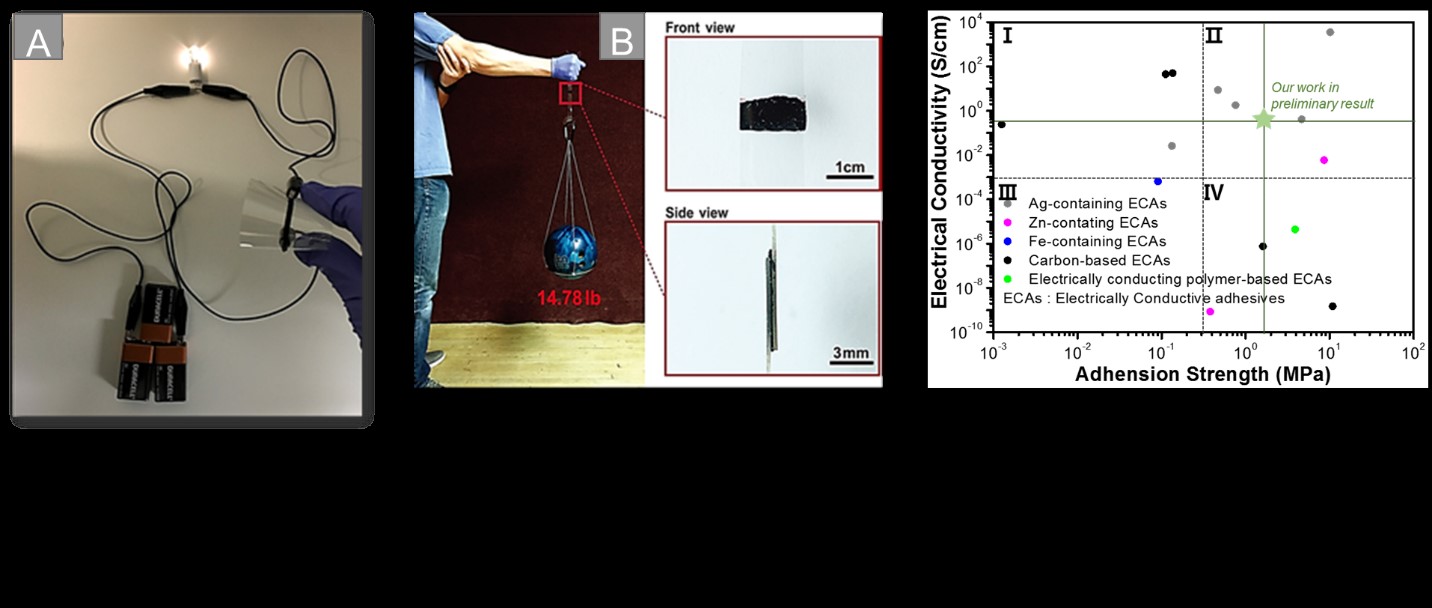Flexible, Stretchable, Electrically Conductive Adhesive And Coating
This FSU developed polymer is a broadly applicable, multifunctional electronic adhesive and coating. The design of the polymer enables solvent-free electric conductivity, interfacial adhesion, flexibility, stretchability, water-compatibility, thin thickness, thermoplasticity, and transparency, with low production costs.
With flexible and wearable electronics becoming more commonplace, new compatible technologies will be needed to support and promote their use. The Electrically Conductive Adhesive (ECA) fills a need by providing a useful, multi-functional polymer for use in a variety of fields from battery binding to flexible displays.
The current generation of heterogenous electronically conducting polymers suffers from poor adhesion resulting in high energy loss, signal error, and undesirable electrical resistance. Additionally, they experience phase separation, severe stiffness, and rapid aging. The ECA has a well-defined block polymer structure and controllable crosslinking behavior, resulting in a long-lasting material with strong adhesive properties, high electrical conductivity, and flexibility.
Electrically conducting polymers must have both adequate adhesive and conductive properties to fulfill their purposes. Traditional conducting polymers will generally use fillers to achieve conductivity; however, this leads to many drawbacks including severe phase separation, deterioration of mechanical properties, and shortened lifetime of the material. Currently available materials that attempt to overcome these challenges are costly and relatively poor conductors per unit mass of material. The ECA is a homogenous polymer that intrinsically overcomes these barriers at a fraction of the cost.
The ECA promises to improve performance and reduce costs of applications wherever electrically conducting polymers are found.
For example, graphite anodes are begrudgingly used in lithium-ion batteries as the higher capacity Silicon anode has poor tolerance for existing PVDF binders during charge/discharge cycles. ECA could be a suitable replacement that improves battery performance ten-fold.
Solar cells need excellent adhesion and conductivity between the Silicon substrate and photovalic device, which ECA provides.
Existing mechanical strain sensors have problems due to short detection ranges and poor flexibility. ECA can accurately transfer electronic signals upon long-range movement on uneven surfaces, promoting its use in biomedical motion sensors and smart fabrics.
ECA can work in OLED displays that are thin, flexible, stretchable, rollable, and lightweight.
ECA can also be used as an anti-corrosive conductive coating material. It undergoes a redox process that controls the surrounding counter ions on metal surfaces, preventing localized corrosion


